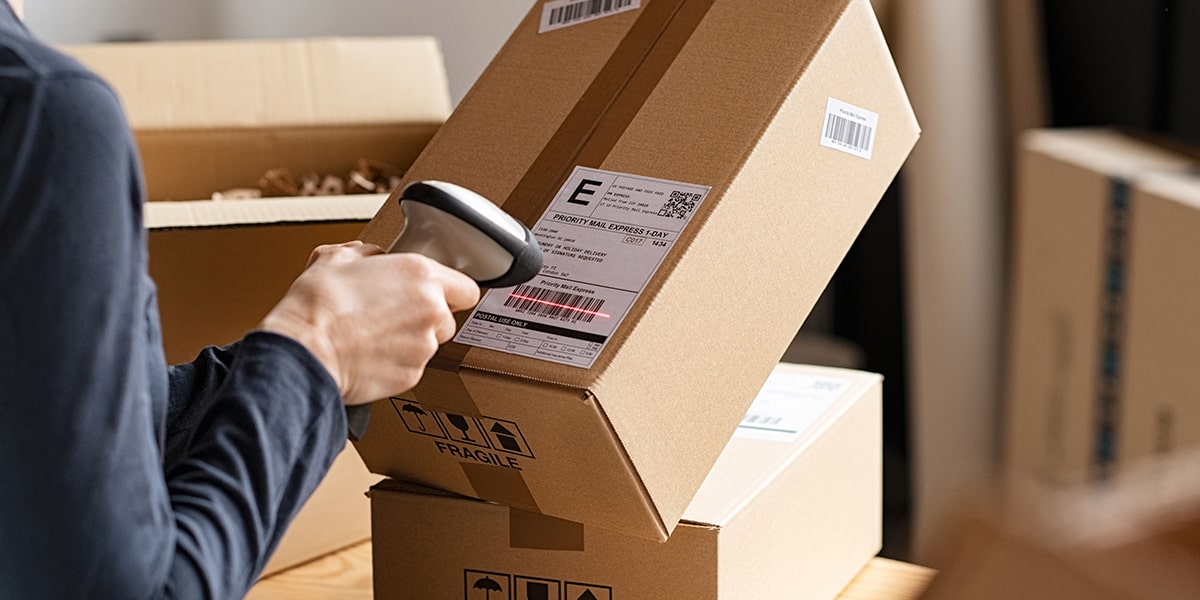Effective packaging techniques are crucial if your organization ships products to other companies or consumers. Durable packages shield products as they move through the supply chain, ensuring they reach their destination safely.
Packaging labels are another vital component of safe shipping. The adhesive labels stick to package exteriors and provide details about internal components and proper handling techniques. The information increases visibility and safety for workers and end users.
This packaging label guide explores different label types for shipping. Learn more about what packaging labels mean and how they benefit companies.
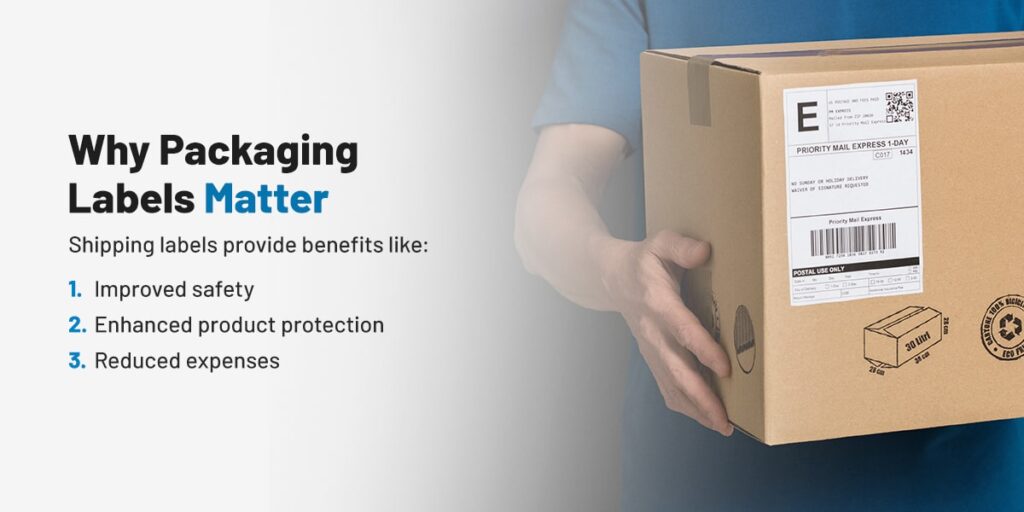
Why Shipping Labels Matter
Packaging and shipping labels serve multiple essential purposes for shipping and handling. By including labels, you create a smoother shipping experience from beginning to end. Shipping labels provide benefits like:
- Improved safety: Packaging labels provide important details about internal products. Distribution professionals use this information to make the safest and most informed decisions while handling the container. For instance, a label might signal that a box contains hazardous materials. Anyone handling the box can understand its sensitivity and take the appropriate measures when moving it. Without the label, someone might use improper handling techniques that lead to injury or other accidents.
- Enhanced product protection: Labels also increase product protection. Certain products require careful handling, and incorrect techniques could damage them. For instance, many pharmaceutical bottles consist of glass. A fragile shipping label informs handlers that internal products need additional care. That way, the bottles arrive safely and end users can implement them immediately instead of needing replacements.
- Reduced expenses: Packaging labels can reduce replacement and repair costs. They increase knowledge as products move through the supply chain, informing workers of correct handling methods. The more information they have, the more they can reduce damages. Damaged products have significant disadvantages — customers become dissatisfied and your organization has to pay additional repair or replacement expenses. By using handling labels, you increase product protection and minimize the need for costly replacements.
Breaking Down the Types of Packaging Labels
Learning more about various shipping label types helps you understand which type to use for your product and package type. The more you know about labels, the more informed decisions you can make when packing and handling your items.
These are six packaging label types:
1. Fragile Packaging Labels
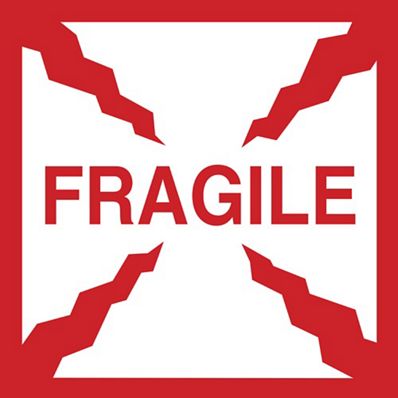
Fragile labels are one of the most common label types for packages. These messages alert carriers and handlers to use extra care when moving items. You can use these labels for products that shatter or crack easily. Many items could be considered fragile, from glassware to electronic devices. Using Fragile labels and protective internal packaging reduces the risk of damage during shipments.
Fragile labels are often in red or other bright colors to stand out to carriers. It’s best to select a proportionate size to the rest of your package, so handlers see the fragile note right away. For instance, a large box should have a larger Fragile label than a small container.
2. Fragile Glass Packaging Labels
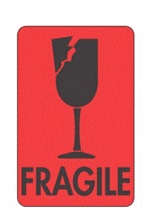
Fragile shipping labels are also available with more specific details. The additional information adds more insight into the package’s components, letting carriers adjust their handling techniques.
The Fragile Glass shipping label indicates that the container holds delicate glass items. The label typically looks similar to the standard Fragile label but with additional text explaining the package contains glass.
These label types are best suited for items like:
- Mirrors: Mirrors usually consist of glass, so they require additional care during transport. The Fragile Glass label informs handlers to use care when moving them between transport vehicles.
- Glass kitchenware: Many kitchen tools and containers have glass materials, increasing their fragility. Items like bowls and drinking glasses can crack without the right handling methods.
- Lightbulbs: Lightbulbs are another example of fragile glass items that can sustain damage without precise handling.
3. Fragile Handle With Care Packaging Labels

Another type of fragile label is the Fragile Handle With Care message. These labels include the text “handle with care” in bold letters, drawing attention to the package’s careful handling needs. Sometimes, this label type is accompanied by a “please” or “thank you” message on the top or bottom of the sticker.
The Fragile Handle With Care labels don’t specify the material type inside. Instead, they emphasize sensitive care in general. The broader message allows you to use them for a wider range of products.
4. This Side Up Packaging Labels
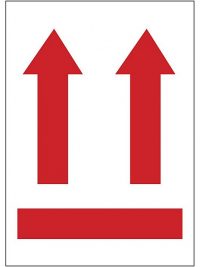
Many organizations use the This Side Up label for their products. This is a common label type that ensures handlers place boxes and containers in the correct orientation. They feature arrows pointing upward, indicating the proper package position.
Some items need to rest in one direction to evenly distribute their weight. For instance, certain medical instruments have heavy bases that you must place on surfaces. If you rest the device on its side, the uneven weight distribution could harm lighter components. Or, certain products might contain liquids that could spill if you set them at the wrong angle. By adding a This Side Up label, you inform handlers of the right orientation and protect items.
5. Method 50 Packaging Labels
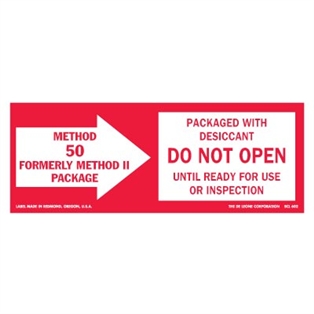
Method 50 labels tell carriers and end users that the package contains desiccant packets. These packets have moisture-absorbing elements that keep products fresh during transport. However, they’re more effective in a sealed container. Opening the package exposes the desiccants and products to external temperatures and weather conditions, making it important to keep the container sealed.
The Method 50 label informs handlers to keep the container closed until use or inspection. That way, items remain fresh and unimpacted by outside conditions.
Many products use desiccant packs during shipping, including:
- Perishable foods
- Jewelry and silverware
- Electronics
- Medications
6. Caution Packaging Labels
The Caution shipping label is another essential type. This message encourages handlers to use caution when lifting or moving the shipping container. These labels often include more details about why caution is necessary to give carriers as much information as possible. For instance, the labels might have information about:
- Heavy contents: A heavy content message increases carrier safety when they lift and handle the container. Smaller packages might seem lightweight but contain heavy materials that could strain carriers. By including this Caution label, handlers know to act more carefully.
- Hazardous materials: Hazardous material labels explain that internal products are potentially harmful in improper conditions. For instance, explosive materials require an identifying label. Carriers must follow all safety regulations when transporting these products.
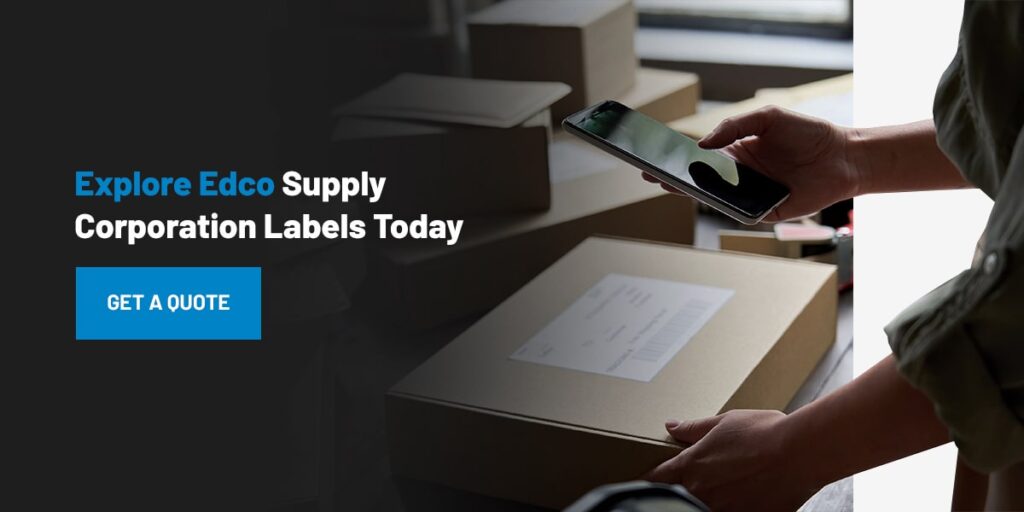
Explore Edco’s Packaging and Shipping Labels Today
No matter your industry, proper packaging techniques are essential for success. Shipping and handling labels protect products and inform users of internal contents. Keep your shipments efficient and protected with Edco Supply Corporation shipping labels today.
We offer many packaging labels for boxes, bags and other package types. Each label is easy to use and made with high-quality materials that withstand tough shipping conditions. A wide range of sizes supports many package types, letting you find the best fit for your shipping needs.
To get started with Edco Supply Corporation labels, request a quote today.


